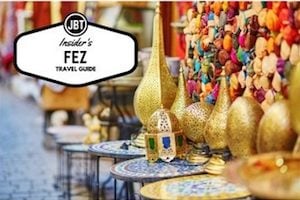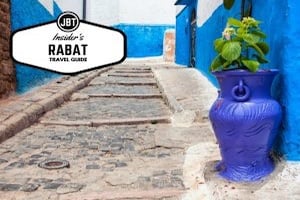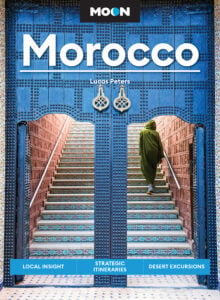
The Meknes medina, garnished as a UNESCO World Heritage Site since 1996, holds many treasures within its walls. The first one can be admired even before you enter the imperial city: Bab Mansour. This incredible gate (bab in Arabic) is not only a spectacular example of Almohad architecture but it also holds a unique story behind its construction.
Bab Mansour was actually the last important construction project ordered by Sultan Moulay Ismail. He conceived it not as a defensive stronghold, but as an elaborate homage to himself and to the strong Muslim orthodoxy of his dynasty. The architect behind the great masterpiece was a Christian convert to Islam named Mansour Laalej (whose name translates to “victorious renegade”) who sought to ascend in the sultan’s court. His name also contributed to the name of the gate (mansour means “victorious” in Arabic).
Legend has it that when the gate was completed Moulay Ismail inspected it and asked Mansour Laalej if he could do better. El Mansour felt compelled to answer “yes”, but this only angered sultan to the point that he had him executed. As colorful as this local tale may be, historical records show it probably did not occur as the gate was only completed in 1732, after the sultan’s death and under the reign of his son, Moulay Abdallah.
A Splendid Homage
Local legends aside, Bab Mansour is well known all around the world for its incredible architecture. Since its original purpose was to pay homage to the sultan, great emphasis was put on the decorative details of the gate. Bab Mansour is thus intensely adorned by green and white zeillij tiles and engraved Koranic panels, all of which have unfortunately faded significantly with age. Visitors can still admire the alternating concave and convex ceramic design that decorates the greater part of the gate and creates a wonderful illusion of an intricately embroidered cloth. The wooden gateway (which stands 16m tall and 8m wide) is also not in use anymore but visitors can use a smaller side door to enter the medina.
In keeping with Moulay Ismail’s efforts to erase all traces of the Saadian dynasty that preceded his, some parts of Bab Mansour were created with materials gathered from other Moroccan monuments and palaces. For example, the two marble columns that support the two bastions on both sides of the gate were taken from the nearby Roman ruins of Volubilis and the two taller Corinthian columns were retrieved from El Badi Palace in Marrakesh.
An International Treasure
Meknes has over 20 gates lining its 40km of protective walls, but Bab Mansour manages to stand out from the rest with its grand structure and incredible architecture. In fact, its splendor is so singular that the gate is frequently considered the most exquisite of its kind in North Africa and one of the four most beautiful gates in the world.
Bab Mansour has seduced many visitors over the years but none have been able to illustrate the gate’s allure quite as eloquently as French novelist Pierre Loti (1850-1923) who once described it as a “glimmering, glinting, […] priceless tapestry placed over these ancient stones to relieve the monotony of these towering walls”.
If you’d like to experience such Moroccan architectural delights as Bab Mansour contact us today. Our team of travel professionals can help you design the perfect itinerary for you Morocco vacation.








